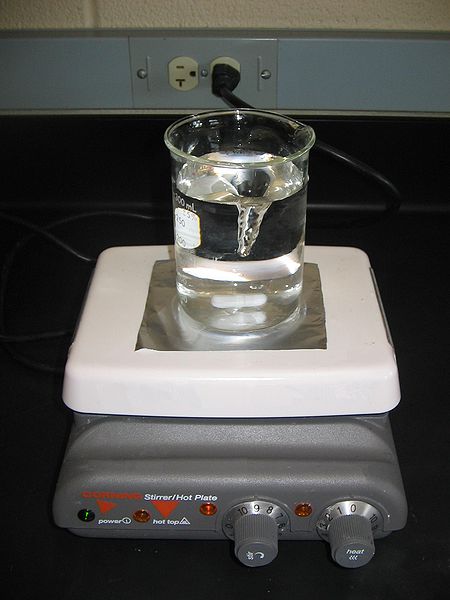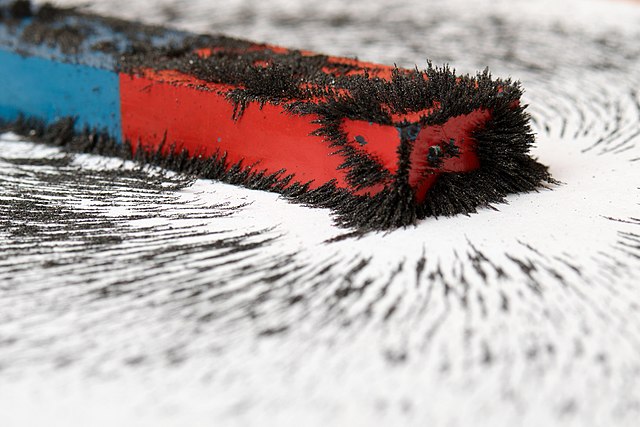A magnetic stirrer or magnetic mixer is a laboratory device that employs a rotating magnetic field to cause a stir bar immersed in a liquid to spin very quickly, thus stirring it. The rotating field may be created either by a rotating magnet or a set of stationary electromagnets, placed beneath the vessel with the liquid. It is used in chemistry and biology as a convenient way to stir small volumes and where other forms of stirring, such as overhead stirrers and stirring rods, may not be viable.
A stir bar mixing a solution on a combined hot-plate magnetic-stirrer device; the left knob controls the stirring rate and the right knob controls heating
Four magnetic stir bars next to a metre stick
Different sizes of magnetic stir bars
Magnetism is the class of physical attributes that occur through a magnetic field, which allows objects to attract or repel each other. Because both electric currents and magnetic moments of elementary particles give rise to a magnetic field, magnetism is one of two aspects of electromagnetism.
The shape of a bar magnet's magnetic field is revealed by the orientation of iron filings sprinkled on the table around it.
An illustration from Gilbert's 1600 De Magnete showing one of the earliest methods of making a magnet. A blacksmith holds a piece of red-hot iron in a north–south direction and hammers it as it cools. The magnetic field of the Earth aligns the domains, leaving the iron a weak magnet.
Drawing of a medical treatment using magnetic brushes. Charles Jacque 1843, France.
A live frog levitates inside a 32 mm diameter vertical bore of a Bitter solenoid in a very strong magnetic field—about 16 teslas







